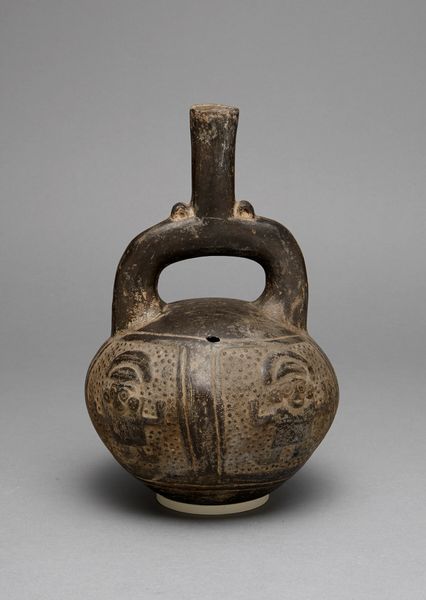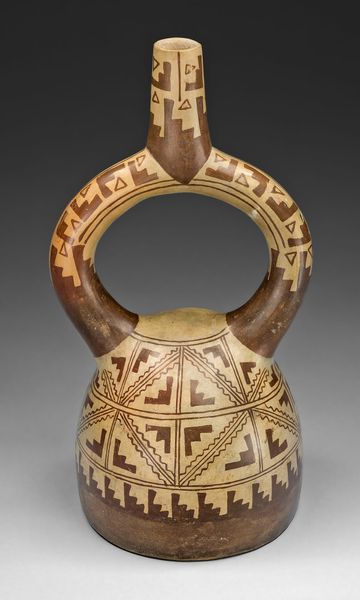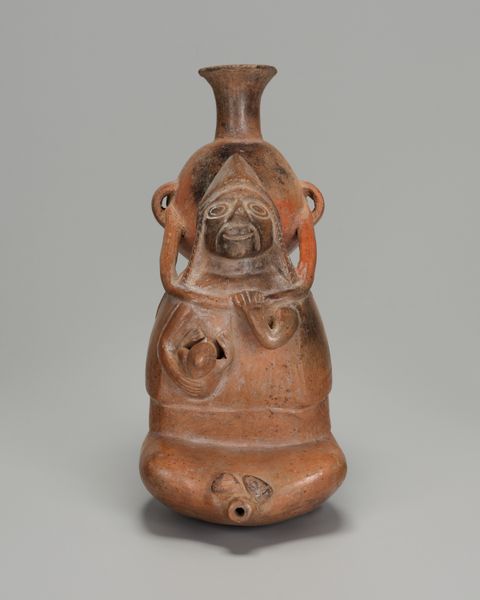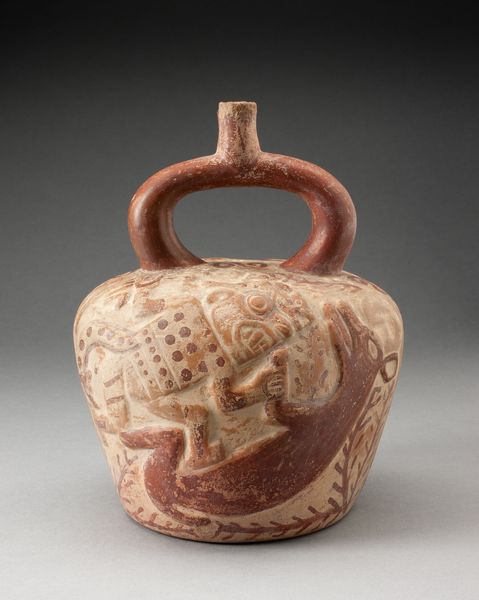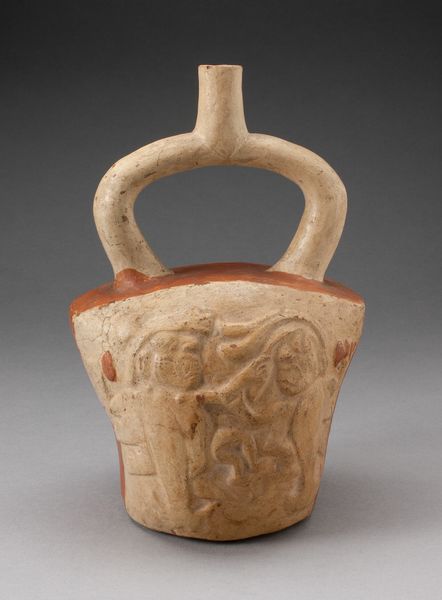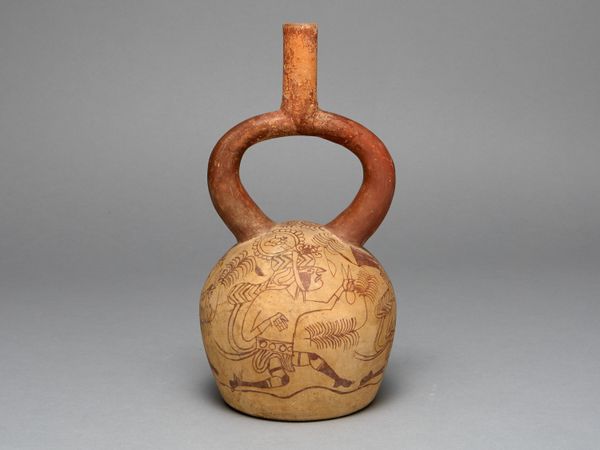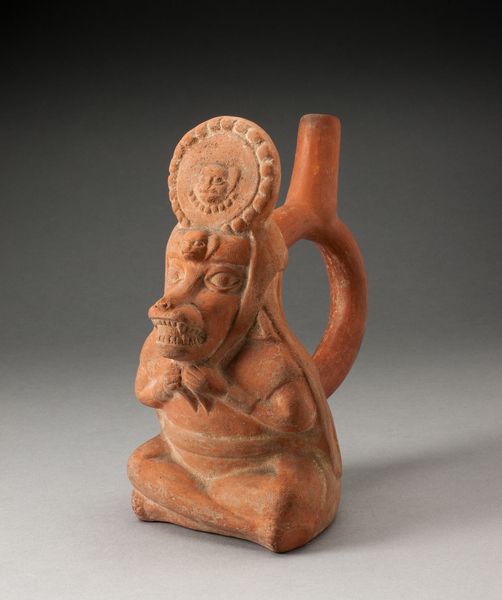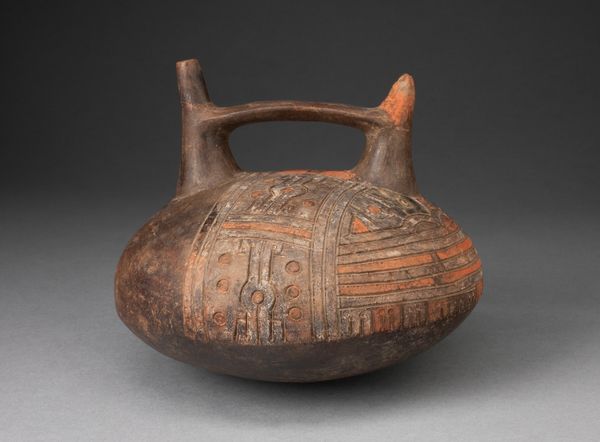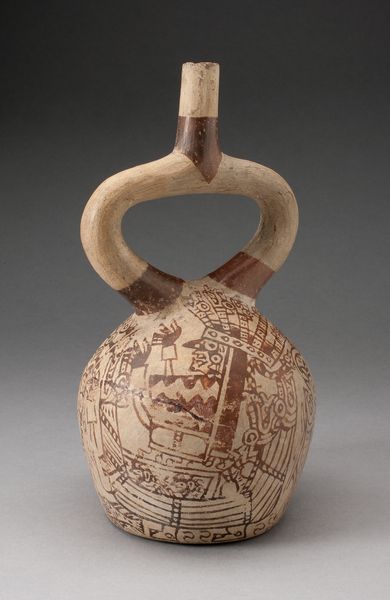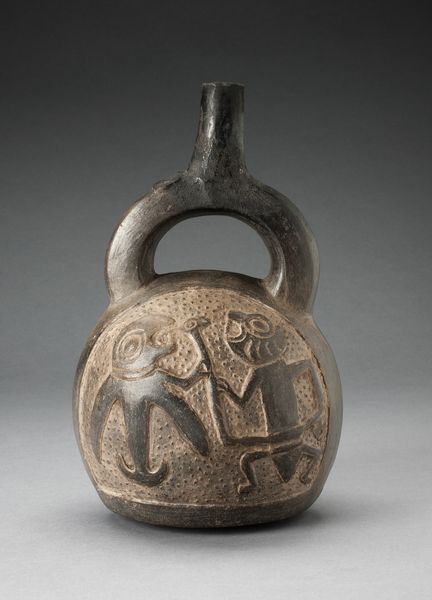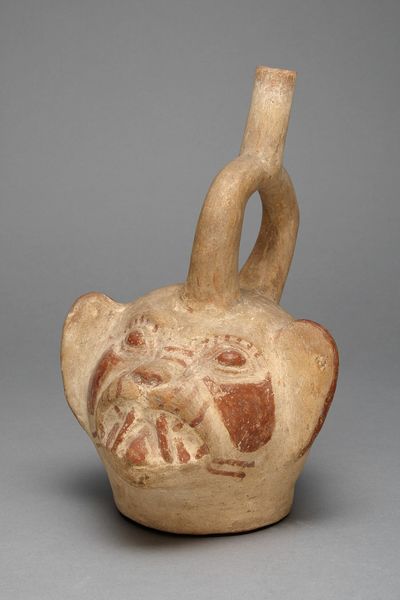
Handle Spout Vessel with Relief Depicting a Standing Figure, Holding Farming Tools c. 100 - 500
0:00
0:00
relief, ceramic, earthenware
#
relief
#
ceramic
#
figuration
#
earthenware
#
indigenous-americas
Dimensions: H. 24.8 (9 3/4 in.)
Copyright: Public Domain
Curator: Let's explore this striking ceramic vessel. It's titled "Handle Spout Vessel with Relief Depicting a Standing Figure, Holding Farming Tools" created by the Moche culture sometime between 100 and 500. It's currently held at The Art Institute of Chicago. What are your initial thoughts? Editor: The muted tones of the ceramic give it an earthy, grounded feel. It has a solidity, a clear functionality indicated by its form, though the relief elevates it beyond mere utility. Curator: Exactly. Function intertwined with representation. Vessels like these weren't simply containers; they were potent signifiers within the Moche world, embodying socio-political structures and spiritual beliefs. Note how the figure is adorned – suggesting status or perhaps a role as a community leader involved with agricultural prosperity. Editor: Right, because the material reality speaks volumes here. This wasn't some rare imported clay. This was readily available, local earth, manipulated by skilled hands. It's about control over resources, both natural and human labor to shape them. The repeated floral designs framing the scene could speak of land cultivated. Curator: I read those florals also as gendered symbols. The agricultural tools held by the figure–potentially male coded–contrasted and balanced with floral elements and thus linked to ideas of fertility and the vital role of women in Moche society and notions of cyclical renewal. This duality is constantly negotiated in Moche art. Editor: So you’re saying the imagery implies a cooperation needed between gendered labor roles and access to material abundance, further symbolized through the crops themselves depicted growing abundantly. I hadn't considered it, but it makes perfect sense within a society deeply dependent on successful harvests. Curator: And think about how these vessels would have circulated within the Moche community, exchanged during rituals or used as offerings, thus continually reinforcing these social narratives through daily practice and special occasions. Editor: That act of circulation matters so much! We must acknowledge the vessel is itself a container; its materiality holds significance beyond what’s placed *inside*. And, that circulation represents consumption itself. The question becomes, what beliefs were they consuming in addition to sustenance? Curator: Precisely. It urges us to recognize the layered complexities embedded within these objects—where artistic expression becomes intertwined with material conditions and socio-political realities. A potent blend of form, function and deeper cultural narratives, even now. Editor: Looking at this ceramic vessel allows one to appreciate how the artist played a crucial role by visually enacting these social ideals within durable, tangible material for consumption and sustained reflection.
Comments
No comments
Be the first to comment and join the conversation on the ultimate creative platform.
